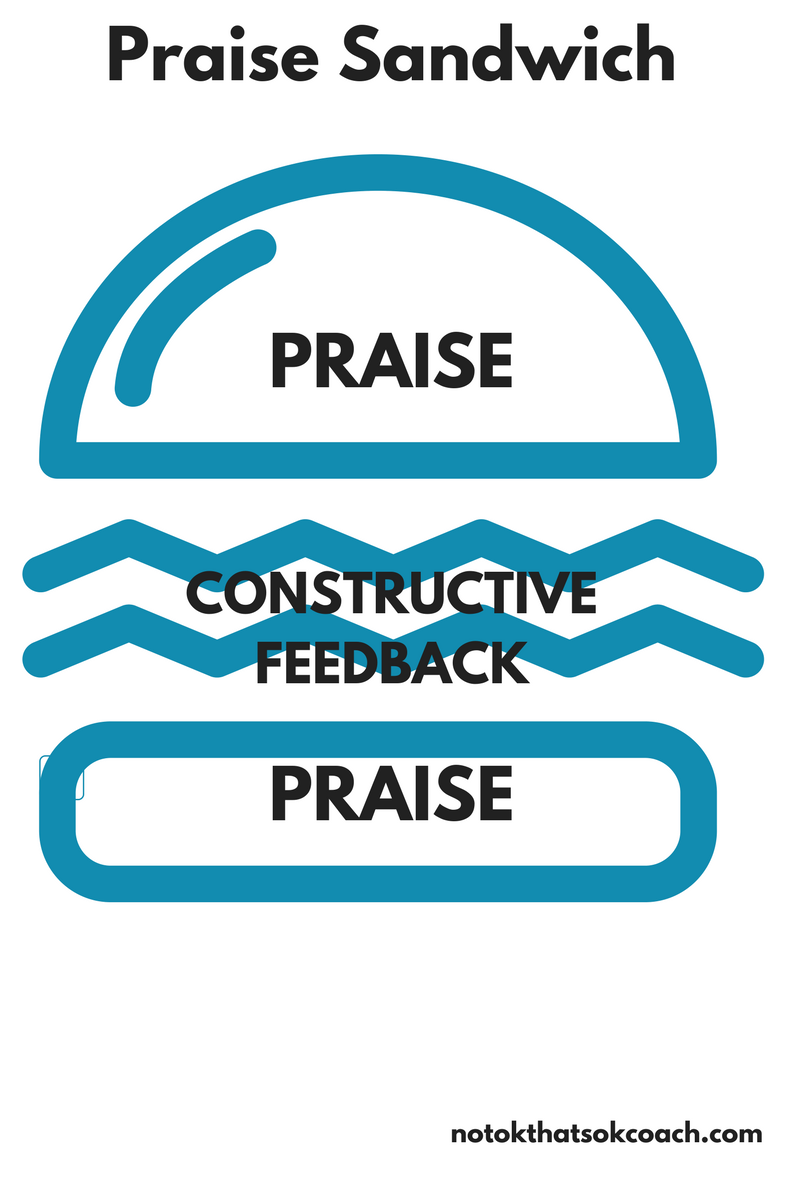No one likes being told the hard work they put in stinks! Like, really stinks! You know that project you spent a million hours on both at work and at home just to get a “that’s not exactly what I was looking for” message from your boss. Most people don’t like being the ones to deliver a harsh message about a project they know someone has spent countless hours on. Sadly, it happens and needs to happen! In order to grow and develop as a professional we need to learn the essentials of both giving and receiving better feedback.
I’ll always remember one of my first bosses criticizing me for not planning an event exactly how they saw it happening. They weren’t upset about how the event went, actually really happy with it, but my process was different from their process. I felt bullied, inadequate and questioned who I was.
As a professional, it’s so important to understand where people are coming from when they give feedback, stand up for yourself, and when it’s your turn to give it know exactly what to do. These 5 tricks will ensure you’re off to a great start to both receive and give better constructive feedback.
Know the goals.
Before you give or can fully receive feedback think about you and your team’s goals.
- What are you trying to accomplish?
- For whom?
- Why are these the goals?
- Who set them?
- Are they set in stone or are they meant to change as the project develops?
Constantly refer back to these goals as you go through the feedback process.
Keep it professional.
When both giving and receiving feedback, make it about the task or project and not a personal attack.
We all have different ways of doing things and the more we can understand each other’s processes the better we can improve and work together. When someone is giving feedback or are receiving it, remember to not make it about the person. This is not an attack on you as an individual, and is strictly professional..
Ask questions.
If you’re unsure why you’ve received the feedback ask for clarification and be prepared, open minded and ready to hear the answers. Use clarifying questions or statements like:
- Tell me more
- Can you give me an example?
This is known as a feedback loop. Where it becomes a conversation between person a and b as opposed to one person disseminating information.
Tell the truth.
If you don’t like something-say it. If you’re in the position to give feedback, be constructive and say it where it needs to be said as opposed to talking about it when it’s either too late or not with the people who can implement the change.
Don’t be the one talking about it behind someone’s back. Give the person the chance to speak and have an open conversation.
Be specific.
If you’re receiving feedback, be specific about your project and how you came to the conclusions.
This isn’t a time to be defensive but to express and address any concerns in a professional way. If giving feedback, let the person know what is not working and why it isn’t working. This shouldn’t be a “read between the lines” situation. They should be able to understand exactly what you mean and how they can implement a potential change. You should also be open to them asking you questions along the way.
Praise Sandwich Technique for Giving and Receiving Better Feedback
Giving and receiving feedback is not always easy!
I’ve used the praise sandwich which tends to work well. It helps you focus on both the negative and the positive.
The outside layers (think bread) are the positive aspects while the inside (meat) is the negative.

It works like this:
- Start with something positive. Be truthful and honest about what you liked about the person’s work.
- What you noticed that can be improved upon, changed, or tweaked.
- End with something positive.
This is not meant to sugar coat the truth but is a great exercise for both the person giving feedback to identify the strengths and assets of the individual and for the person receiving feedback.
Have you tried this before?
Now that you know some strategies to both give and receive feedback, what do you think you’re going to try first? What has worked for you in the past? Let us know in the comments below.
- Cultivating Relationships - July 20, 2021
- Empowering Our People - July 13, 2021
- Finding Purpose - July 6, 2021





“If you don’t like something-say it.” — I struggled with this so much for so long. Now, I don’t hesitate. Great read!
It took me so long to get there! I didn’t want to hurt people’s feelings but in the end we weren’t getting anywhere
Thank you Alissa! This article is perfect timing for me. I need to have this type of conversation tomorrow so reading this has been really helpful.
I’m gonna start with giving feedback but the conversation will naturally flow into me receiving feedback too.
xo –
Fiorenza
Please let me know how the conversation goes tomorrow! It really is never easy to give or receive!! I wish you the best of luck.. You got this!!!
This is such a helpful article! Love that you talk about making sure to comment toward the task (not the person!)
Thank you so much Madeline!
“make it about the task or project not a personal attack” that is so wise and valuable! I think sometimes it’s so easy for it to become a personal attack, or for the other person to take it that way. The way we respond to feedback is important too!
I couldn’t agree more, Emma! It really is all about a tactful approach and not directing it as a personal attack and keeping it about the work.
This is all so true! I’ve found the compliment sandwich to be a wonderful tool over the years. My old boss taught me that trick when I was a graphic designer and had to discuss with clients why their ideas may not be the best. Great advice!
Thank you so much, Lynn. It really is something so simple but makes a HUGE difference!
Praise sandwiches are the best! It changed how I communicate! Great article about how to give better feedback!
Thank you, Jennifer! It makes it so much easier for both the giver and receiver of feedback!
These are some really practical tips! Thanks for sharing!
Thank you Aida!
I totally agree with all of this! Maybe I’ll send this to a few people I know could use a more tactfull approach when giving feedback 😉
Thank you, Taylor. You should send a gentle hint and this post 🙂
Oh the dreaded “feedback”… I however love feedback, even when it’s negative. I feel like unless it’s a malicious intent, even negative feedback is so important do defining who you are in business, art, and anything a person is striving to do!
I completely agree, Jessica! I don’t love to receive negative feedback but it’s helped me learn and grow so much and without it I think I would have been stuck.
This is defiantly something I could work on, giving and receiving feedback is something that docent always come naturally.
For me either, Amy! It really is something that I have had to work on. Thank you for reading!
what great tips for life and business! thank you so much for sharing!
Thank you so much Jiyeon!
What a great read! I am the worst at taking criticism. It’s definitely something I have to work on.
It’s so hard Jennifer! No one likes to be criticized.. that’s for sure!
I really enjoyed this blog post, to help with growing and handling negative feedback
Thank you so much, Sarah!
These are really great tips! As someone who doesn’t like confrontation, being a manager is difficult! I HATE to give feedback to my staff! But being positive first is a great strategy!
I am so the same way! I don’t love conflict and am a really positive person. I totally agree and think being positive even in a negative situation can help.
Great read; I’m still working on speaking my mind in the moment. I’m too worried about hurting feeling.
Thank you so much Alekandra! It really is hard to get to find that sweet spot where you can be open and comfortable with giving feedback. I hope this was helpful.
I’ve learned in my Toastmasters club that you should always give constructive feedback so that the receiver can improve himself/herself!
That is so true Ana! It really is best to give feedback to give that person the opportunity to improve.
This is great advice! I think the praise sandwich works really well, especially for me personally!
I am so glad you liked it and I agree, the praise sandwich really does work.
I needed to read this this week!! Thanks for the great tips and perspective!
Thanks so much for reading and I am so glad it was helpful!
I love your blog posts, I always learn something from them 🙂 (also huge fan of the praise sandwich!)
Thank you so much Rihanna, that means a lot! The praise sandwich is the best!
Really good tips for a tough task! I’m always working on both giving and receiving feedback more graciously. Being able to speak truthfully and constructively with teammates and friends is so helpful.
Thank you so much Allie! Feedback is never easy and I completely agree that we should be giving truthful and constructive feedback.
This is so great! I have book-marked this for future reference. As I start a new job on Monday, I certainly want to start off on the right foot with giving and receiving feedback! Thank you!
Good luck on your first day Emilyanne!
I do a praise sandwich on all my report cards:)
It’s seriously the best, Kim!!
I love the Praise Sandwich idea, I haven’t used it before knowing the name of the technique but I feel like this is how I’ve given feedback before. It’s definitely hard to get constructive feedback but it is so important for your personal + career growth. When I first started my career, I was so scared of constructive feedback but now after a few years I now CRAVE getting the feedback to give my !
Kristen | http://www.sophisticatedgal.com
AH, the sandwich – definitely learned ALL about that in Management classes at good ol’ Wharton! 😉
Coming Up Roses
I love the illustration of the sandwich! I find it horrible when people just criticise rather than kindly critiquing things written. The way you use your words should be helpful in the long run!
I couldn’t agree more! It’s much easier to take constructive criticism if it’s also with positive feedback!
I always use the sandwich technique! Great tips!
Thanks so much Anna!
Sometimes getting negative feedback can hurt but it’s still important to get it from people we trust!
I agree Susannah! It needs to be done in a constructive way so we are receptive to the information and given suggestions on how to improve.
Giving the right type of feedback is so important! I’ve had so many bosses who will give me negative feedback, but it could have been done in a constructive way. A lot of times, people just forget about positive feedback altogether.
Exactly! I am all about giving constructive feedback but it needs to be delivered in a way that the person can actually receive the information. No one wants to be bashed for sure! I also think it’s important to give positive feedback on a consistent basis and relevant to things that have just happened or are currently happening. There’s no reason to wait for a review to bring up all the negative and positive things that happened a full year ago! Let us know you’re paying attention and appreciate what we do!